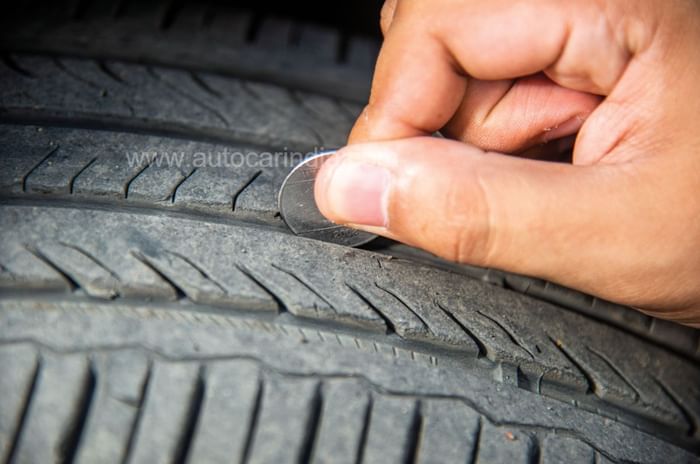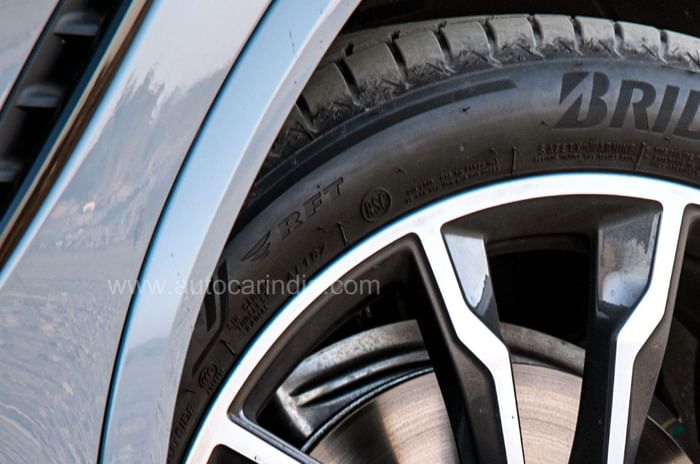Tyre care: How to avoid and repair a puncture
There are ways to avoid a puncture, but if you still get one, we tell you how to use a puncture kit.
Published On Jul 01, 2023 09:00:00 AM
13,245 Views
Follow us onSteering clear
Pressure

Underinflated tyres cause the sidewalls to flex more thus effectively ‘weakening’ it. This can result in cracking and punctures. You can overinflate tyres by 2-3PSI over the recommended level in case you are planning a long drive. That said, overinflating too much reduces the tyre’s contact patch, gives you less grip and increases your braking distance.
Rejoining a road

Make sure to angle the wheels against the cliff such that the sidewall does not make contact with the edge of the road, but the tread surface does. Doing so will avoid any chance of scuffing the sidewall of the tyre and/or damaging the rim.
Potholes

Make sure to position the car in a way where no part of the sidewall hits the edge of the pothole and the impact is instead taken by the tyre tread surface.
Stay in the centre
.jpg?w=700&c=0)
The edges of a road are often littered with debris, some of which can cause a puncture. So avoid driving on the edges of the road. Similarly, avoid the raised reflectors and take care over bridge expansion joints as they can have exposed bolts or sharp edges.
Maintenance

Balancing tyres periodically protects them from uneven wear. Also, make sure you rotate your tyres as per the recommended pattern as this evens out the wear.
Tyre life

Tyres contain natural rubber, and thus, have a shelf life. Average lifespan is roughly 10 years from the date of manufacture so replace old tyres as they get brittle.
Valve stem damage

The metallic valve stem can corrode and even wear out due to contact with chemicals and salts on the road, thereby causing leaks. Also, mishandling the valve stem especially during air fill-ups could cause the valve to loosen.
Avoid sunlight

If you are planning to park your car for long durations, ensure that it is in the shade and away from direct sunlight to avoid ageing the rubber. Also, have it moved every once in a while so it doesn’t encounter flat spots or get out-of-round with the weight constantly on one side.
Using a puncture repair kit
Only repair puncture damage on the tread surface. If the sidewalls are punctured, the tyre must be replaced.
1. First, examine the tyre completely to identify the object.
.jpg?w=700&c=0)
2. Once you have identified the object, make sure to use tools to get it out and not your hands.
.jpg?w=700&c=0)
3. Take the reamer tool and use it to enlarge the cavity.
.jpg?w=700&c=0)
4. Slot the sticky rubber strip through the strip insertion tool dividing it in half.
.jpg?w=700&c=0)
5. Push it in the cavity leaving about 3/4th outside.
.jpg?w=700&c=0)
6. Yank the strip insertion tool and cut off the excess rubber using a blade or a cutter.
.jpg?w=700&c=0)
7. Fill air to recommended pressure and spray soapy water. If you don’t see bubbles, you no longer have a leak.
.jpg?w=700&c=0)
Run-flat tyres
Run-flat tyres are equipped on high-end cars since the cost of production is high. Essentially they allow you to continue despite a puncture due to a reinforced sidewall that can bear the load of the vehicle up to a certain speed.

There are also ‘Support Ring’ tyres that employ a hard ring of rubber between the wheel and the tyre thereby allowing you to continue driving.
Run-flat tyres are naturally more expensive to fix and replace, but offer better safety and stability in the event of a puncture.
Also See:
Tyre care: How much air is too much?
Tyre care: Decoding markings on your car, SUV tyres
Copyright (c) Autocar India. All rights reserved.




Comments
Member Login
Personal Details
No comments yet. Be the first to comment.